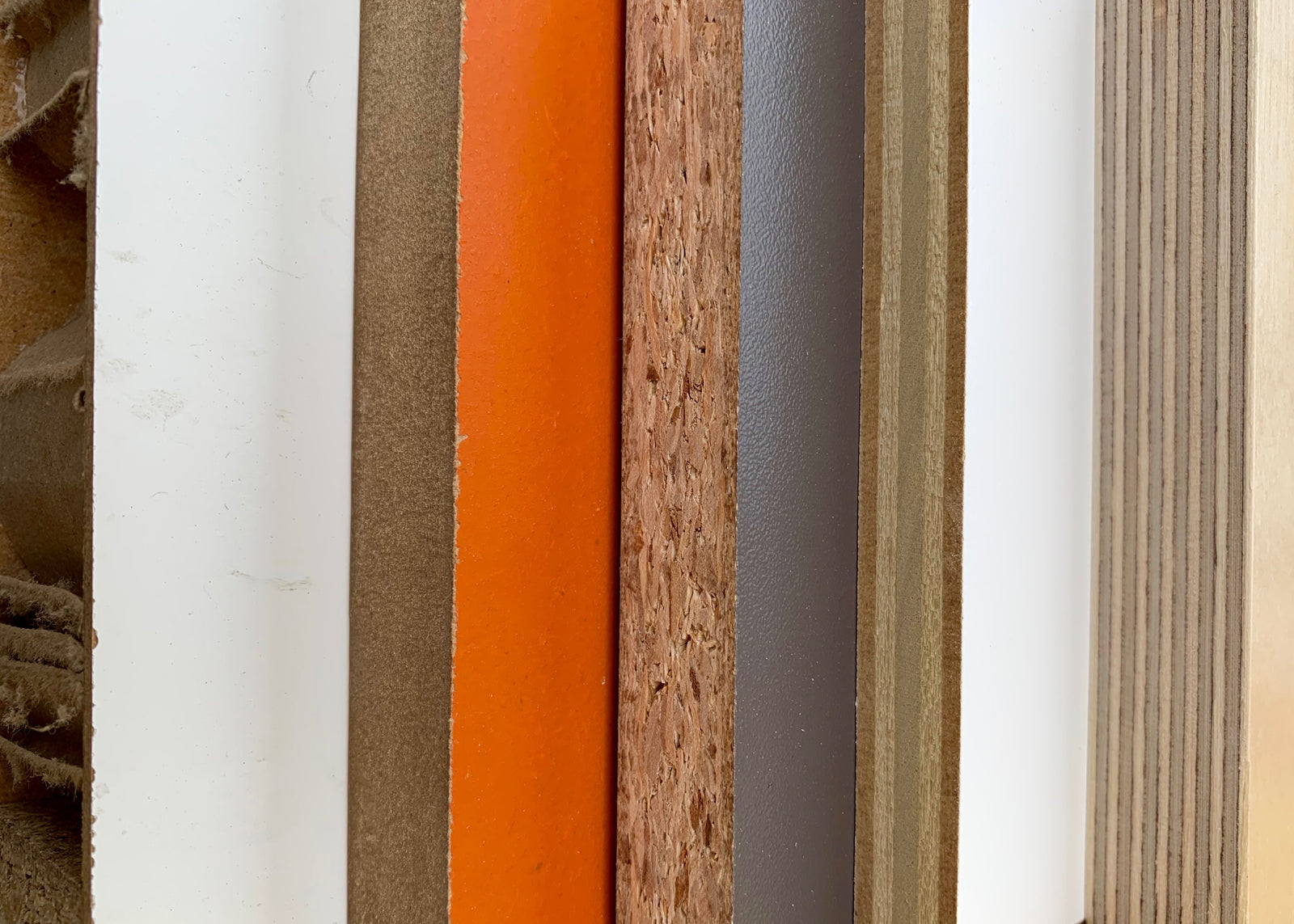Your Cart is Empty

When shopping for children's furniture there are many things to consider. Aesthetics, functionality, but above all is durability. Children need furniture that can stand the test of time. The pieces need to be easy to clean and hold up through prolonged use, dents, spills, and other wear and tear.
The material your furniture is made up of makes all the difference. But not all material is made equal. The best way to inspect if your furniture will hold up is to take a look inside.
This material, also know as chipboard, is a low-density fiberboard. Particleboard is made of wood chips held together by a resin. The surface cannot be finished and that is why it is only used as a substrate. To use particleboard for furniture "faces" must be added to both sides. It can be surfaced with real wood veneer or in this case with a fake veneer. Fake veneers, a printed film, can be paper or plastic.
Durability is limited for this material. Any dents or scratches would ruin the piece and cannot be repaired. Particleboard is usually used in cheap furniture although it can be nicely covered with plastic laminate. The edges cannot be exposed because they are very weak and porous. It always requires edge tape that gets glued to the edge. Edge tape tends to fail over time and once it starts peeling off it will likely continue peeling off.
Medium Density Fiberboard is basically sawdust and resin pressed into a panel. It is the heaviest of all the panels and is good for large painted panels because it won’t warp. Once it chips, usually on the edges, moisture will penetrate very quickly, swelling the material.
The surface is flat and smooth but not so strong and scratches and damages are difficult to repair. The edge can be painted although they are not so hard.
Hollow panels are commonly used for desktops, shelves, doors, and large panels. The inner core is cardboard which makes it very light. Then the edges are particleboard strips covered with edge tape. The surface is a thin layer of MDF that can be painted or laminated.
These engineered panels have some good applications but overall they are not very durable. They can easily be dented or just broken. Once the hollow panel is dented it cannot be fixed. This material is not as strong as others and therefore not as durable for furniture.
Plywood is a “sandwich” of thin sheets of wood glued together. Similar to how you sharpen a pencil, the tree logs are shaved in a rotary motion into a continuous thin sheet of wood called a “veneer”.
Most plywood has inner layers made out of a cheaper wood like poplar and the outside layer can be nicer wood or can also be a plastic laminate.
Regular plywood is not meant to have the edges exposed. Edges are usually covered with edge tape.
This particular type of plywood is ideal for furniture for several reasons.
It’s the same type of wood all across the 13 layers, all birch. That is why the edges can be left exposed. Not only are they pretty and consistent but they are also hard and don’t need any edge tape to hide or conceal them. This type of plywood is bot porous making it less likely to warp due to moisture and is environmentally friendly. Read more about baltic birch plywood here.